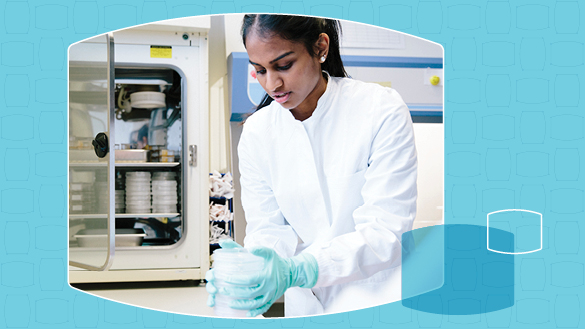|
Biomaterial Basics: An Introduction to Biocompatibility
and Biostability
(Courtesy : Lubrizol)
Choosing the right polymers for your medical device is a
complex process, including testing, quality control and
compliance decisions. During material selection, one of
the more common considerations original equipment
manufacturers (OEMs) will encounter is the performance of
the polymer in a biological environment. When selecting a
material, two properties of a polymer that are sometimes
misunderstood but critical to the performance of the
device are biocompatibility and biostability. This
overview defines biocompatibility and biostability,
explains why they both matter to patient health and
comfort, and provides examples of how performance
properties of commonly used polymers determine what
devices in which they may successfully be used.
BIOCOMPATIBILITY AND BIOSTABILITY AT ITS SURFACE
In simple terms, biocompatibility is the effect of a
material on its host, while biostability is the effect of
the host on the material. The biocompatibility and
biostability performance of a material should be
considered within the context of the biological
environment and intended exposure time for the device. A
device with a material that does not have the appropriate
biocompatibility profile could elicit an unwanted host
response, e.g., blood clotting, while insufficient
biostability could result in premature degradation or loss
of key properties that could result in failure of the
device. It’s important for an OEM to have a trusted
partner that can provide guidance on material selection
considering the specific biocompatibility and biostability
requirements of the finished device. This guidance helps
them develop medical devices that not only mitigate the
risks of adverse reactions, but also reduce hospital
associated infections, shorten patient recovery times, and
improve the patient’s overall experience with the device.
Beyond commercially available materials, an innovative
partner will also consider development of materials that
have enhanced biocompatibility and biostability that will
allow the development of more effective medical devices.
Formulation of materials to address the biological
considerations of innovative medical devices while
enhancing physical and other performance characteristics
requires a versatile chemistry. Thermoplastic
polyurethanes (TPU) can be tailored by modifying their
chemical building blocks to achieve application specific
biostability without sacrificing other critical material
properties. In addition, because TPU performance is
modulated by modifying the type and ratios of its chemical
components, rather than by adding plasticizers, TPUs tend
to exhibit inherent biocompatibility in several
applications.
BIOSTABILITY – “The ability of a material to maintain
its key performance characteristics throughout the
lifetime of the medical device in which it is used”.
THE FUTURE OF BIOCOMPATIBILITY AND BIOSTABILITY –
While no synthetic polymer can be considered completely
biocompatible or biostable for all medical device
applications, Lubrizol is committed to continuing to
innovate to enhance these properties in TPUs. We are
invested in developing materials to broaden the design
space to enable the creation of the next generation of
medical devices.

With regards to specific biostability considerations, the
following general guidance can be helpful for selecting a
sub-set of polyurethanes that may be suitable for an
application. However, the ultimate selection of a material
depends on applicationspecific performance criteria that
should be confirmed by the medical device designer’s own
testing:
-
Consider polycarbonate-based polyurethanes for:
-
Superior resistance to hydrolysis and oxidative pressure
of long-term blood contact applications, especially where
softness and flexibility are required.
-
Consider polyether-based polyurethanes for:
-
Excellent hydrolysis resistance at low pH, such as in
long-term gastric contact.
-
Good oxidative resistance at higher durometer (Shore 55D
and harder) in long term blood contacting applications.
 The biocompatibility and biostability properties of TPUs
make them an excellent candidate for a wide variety of
medical device applications, including: The biocompatibility and biostability properties of TPUs
make them an excellent candidate for a wide variety of
medical device applications, including:
-
Short- and long-term infusion catheters
-
Interventional catheters
-
Structural heart applications
-
Pacing and neuromodulation applications
-
Dental and orthodontic devices
Lubrizol’s wide selection of TPU materials offers
solutions for all these options. To see a full list of
Lubrizol’s medical device polymers, visit
https://www.lubrizol.com/Health/Medical. You will also
find our latest webinar on Materials for Implantable
Devices Decoding Thermoplastic Polyurethanes under the
webinars section on our Medical Device website.
PARTNERS FOR BETTER POLYMER PERFORMANCE Lubrizol is
committed to developing materials for the medical device
industry that provide exceptional performance in
applications requiring special consideration around
biocompatibility and biostability. For more information
contact
Rajnish.Singh@Lubrizol.com
. |
